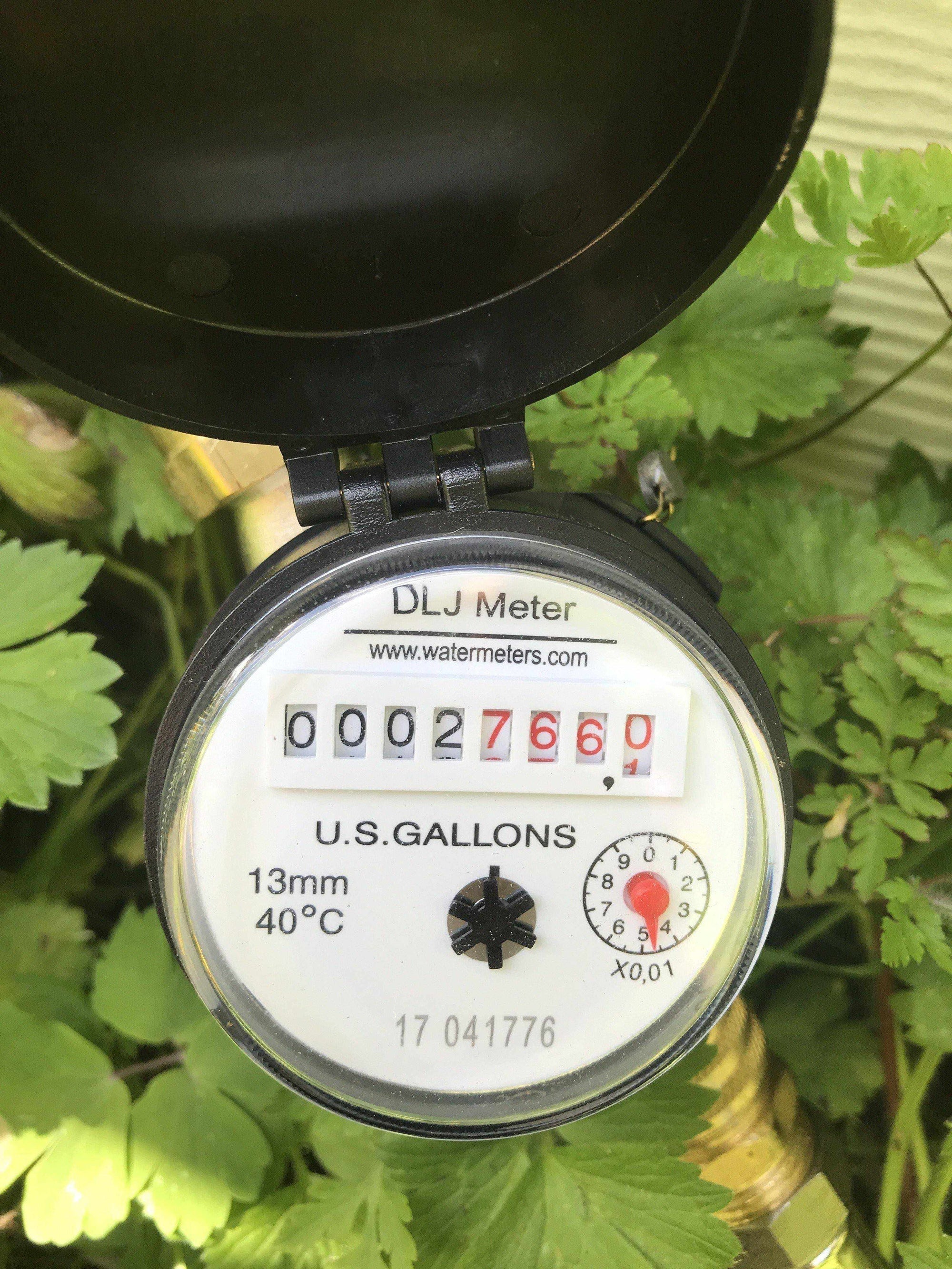Before filling you newly constructed water feature, you have an idea of the pressure and makeup of your tap water, you have a general idea of the flow rate in the fill inlet, and you may have a water meter. In lieu of a meter, you can always time filling a 5-gallon bucket to get an average flow rate (perform five times, throw out the lowest and highest times, and average the remaining three for an average flow rate).
Filling components: If you can, fill individual components to their maximum separately so know the exact amount of gallons of water they hold. Record the gallon capacities and if you can, write the gallon capacities on the component as well. Transient water (such as water in a waterfall or streambed that drains away after a pump is turned off should NOT be included. For instance, my filter tank holds 110 gallons, and my skimmer box holds 34 gallons. Don’t forget to include your external pump, primer pot and even the plumbing. At this point you have all the plumbing sized and installed. If water remains in those pipes when the system is off, then take the total footage of a pipe size and multiple the feet by the following: 1/2“: .0102, 3/4": .0229, 1”: .0408, 1-1/4”: .0637, 1-1/2”: .0918, 2”: .1632, 2-1/2”: .2550, 3”: .3672. My pond has about 1 gallon within the pump and primer pot and about 5 gallons within the discharge lines.
Filling the Main Pool or Cistern: This will be your largest water reservoir and will take the most time to fill. However, this will be the ONLY time to get EXACT data about your system that will not be easily obtained later without basically draining 100% of the water (unlikely unless you are replacing the liner). If you have a bottom filter with gravel, first fill just to the top of the rocks where the water is even with them (basically you could still walk on the rocks with the water in between them). Note the gallons and the time for the filter. Before filling further, make a staff head gauge. Basically take a pole or 2x2 and place on the rocks. Mark the presumed full surface. Then divide the distance into important depths and percentages. Example: my full water depth above my bottom filter is 42”. I marked a line at a quarter, half, three-quarters of the 42”. I also marked a line every 6”. My pond is not symmetrical and has far more gallons at the top than the bottom. Begin filling in increments noting the start and end times to each mark and gallons to reach that point. Continue doing this until full. Add up the totals for the full pool gallon capacity. Next convert the data collected on a board called a Staff Head Gauge that you can place in the pond during maintenance that shows gallons and time at depths. This way, when draining or filling your pond, you know how many gallons you are adding or removing (based on your pond’s shape), and how long it will take to refill or drain (based on your flow and drain rates). Although this might seem arduous and unnecessary, later on you will be so happy you have the data and the Staff Head Gauge.
Determining your Full Surface: This seems like a given, but when you build a free-formed pond using a 2 or 4’ level here and there doesn’t guarantee perfectly level. Once you have filled your system to capacity, look for low spots and fill as needed. Once you are satisfied, note and mark the full depth and gallons. Adjust your overflow just over that mark. Add additional water to ensure the overflow is working correctly.
Draining Components or the Pool: Now that you know your gallon capacities of various components, you should determine your drain flow rates. You don’t have to completely drain your components or your pool, but you should measure how long it takes to drain a single component of x-gallons. My system has a single drain for all components and I found it drains at approximately 11½ GPM by gravity. If your drain system uses pumps, that should be simple enough to figure out. Again, knowing the time it takes to remove x-gallons from your system will be helpful during maintenance and large water changes.
Previous Article: 17: Pond Water – Potable Tap Water
Next Article: 19: Pond Water – Ion Chemistry

